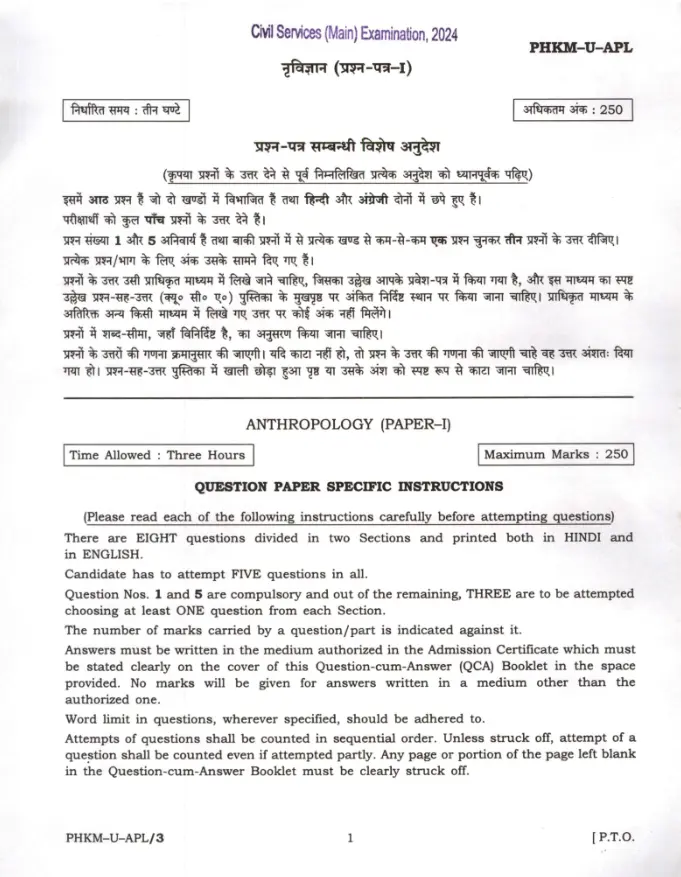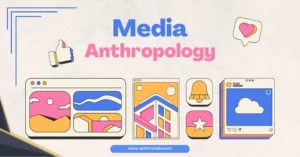AI Answer Evaluation Platform Live Now. Try Free Answer Evaluation Now
Answer Writing for Anthropology Optional
Anthropology Optional is one of the most popular choices among UPSC IAS aspirants due to its well-defined syllabus, scoring potential, and overlap with General Studies. However, cracking this optional paper requires more than just theoretical knowledge—it demands exceptional answer-writing skills.
Effective answer writing helps aspirants articulate their thoughts clearly, present arguments logically, and make their answers stand out in a sea of competitors. It bridges the gap between knowledge and marks, enabling aspirants to score high by structuring answers according to UPSC’s expectations.

Understanding the Demand of Anthropology Questions
Types of Questions Asked in Anthropology Optional
Anthropology questions in UPSC Mains are typically divided into:
- Analytical Questions: Require in-depth analysis and critical thinking.
- Factual Questions: Demand precise and direct answers with relevant facts.
- Opinion-based Questions: Seek personal viewpoints backed by logical arguments.
- Multi-dimensional Questions: Need a holistic perspective, covering social, cultural, political, and economic aspects.

Importance of Understanding the Question’s Demand
Many aspirants fail to score well despite having adequate knowledge because they misinterpret the question’s demand. Keywords like ‘Discuss,’ ‘Analyze,’ ‘Critically Examine,’ and ‘Evaluate’ indicate different expectations. Understanding these directives is essential for writing relevant and focused answers.
Image Placement: Between the two subsections
- Image Description: A flowchart showing types of questions asked in Anthropology Optional.
- Alt Text: Types of Questions in Anthropology Optional for UPSC
Structuring an Effective Answer
A well-structured answer is the hallmark of high-scoring responses. The ideal structure includes:
Introduction:
- Contextualize the question and define key terms concisely.
- Mention the scope of the answer in a couple of lines.
Body:
- Present arguments in a logical sequence using subheadings and bullet points.
- Include examples, case studies, and diagrams wherever relevant.
- Maintain coherence by ensuring a smooth flow of ideas.
Conclusion:
- Summarize the answer, reinforcing the central argument.
- Connect the conclusion to broader implications, such as relevance to contemporary society.
Using Subheadings and Bullet Points for Clarity
Breaking down the answer into subheadings and bullet points enhances readability. It also helps the examiner quickly grasp the structure and flow of your answer.
Image Placement: After the ‘Body’ section
- Image Description: Diagrammatic representation of the ideal structure for UPSC Anthropology answers.
- Alt Text: Ideal Answer Structure for Anthropology Optional in UPSC Mains
Writing Style and Presentation
- Balancing Simplicity and Technicality: Use simple language but incorporate anthropological terminology wherever relevant.
- Avoiding Jargon: Keep the language accessible without compromising on technical accuracy.
- Neat Handwriting and Legible Diagrams: Presentation matters—neat handwriting and clear diagrams leave a positive impression.
- Utilizing Diagrams and Examples Effectively: Use diagrams and examples strategically to make complex concepts easier to understand.
Image Placement: Alongside ‘Neat Handwriting’ point
- Image Description: A well-drawn anthropological diagram related to kinship or human evolution.
- Alt Text: Effective Use of Diagrams in Anthropology Optional
Content Enrichment Techniques
- Integrating Case Studies, Examples, and Current Affairs: Enrich answers by linking concepts with real-world examples and contemporary events.
- Referencing Anthropologists and Their Theories: Mention relevant anthropologists and their contributions to substantiate arguments.
- Citing Books, Journals, and PYQs: Refer to authoritative sources and previous year questions to add depth to your answers.
- Adding Multi-dimensional Perspectives: Ensure answers cover social, economic, political, and cultural dimensions for a holistic perspective.
Common Mistakes to Avoid
- Misinterpretation of Questions: Leads to irrelevant answers.
- Overloading with Facts Without Analysis: Facts are important, but analysis and interpretation are crucial for high marks.
- Lack of Coherence and Flow: A disorganized answer can confuse the examiner.
- Ignoring Diagrams and Examples: Diagrams enhance the visual appeal and clarity of answers.
Model Answers and Previous Year Question Analysis
- Breaking Down High-Scoring Model Answers: Understand the nuances of high-scoring answers by analyzing their structure and presentation.
- Analyzing Previous Year Questions: Recognize trends and recurring topics to prioritize important areas.
- Practicing with PYQs: Regular practice with PYQs helps in understanding the question pattern and structuring effective answers.
Practicing Answer Writing for Anthropology
Regular answer writing practice is the key to mastering Anthropology Optional.
- Importance of Regular Practice: Enhances writing speed, improves articulation, and builds confidence.
- Using AnswerWriting.com for AI-Driven Evaluation:
- Get instant feedback on structure, relevance, and clarity.
- Track progress over time and identify areas for improvement.
- AI-driven suggestions help refine writing style and content quality.
Image Placement: After this section
- Image Description: Screenshot of AnswerWriting.com’s AI feedback system.
- Alt Text: AI-Driven Answer Evaluation on AnswerWriting.com
Expert Tips and Strategies
- Insights from Toppers: Learn from the strategies and answer-writing styles of toppers.
- Recommended Books and Resources: Suggested readings for Paper I and Paper II for content enrichment.
- Paper I and Paper II Strategy: Tips on balancing both papers to maximize scores.
Role of Feedback and Continuous Improvement
- Importance of Feedback: Constructive feedback helps aspirants understand their strengths and weaknesses.
- Self-Evaluation vs. Expert Evaluation: A balanced approach helps in objective self-assessment.
- AnswerWriting.com’s Personalized Feedback: The platform provides customized feedback and actionable suggestions, ensuring continuous improvement.
Mastering Answer Writing for Anthropology Optional requires consistent practice and the right guidance. Start your journey to success with AnswerWriting.com:
- Practice for Free with AI-driven evaluation and instant feedback.
- Explore Tools like PYQ Match Checker, Time Management Tracker, and Syllabus Tagger.
- Boost Your Scores with structured writing and personalized feedback.
Conclusion
Effective answer writing is a game-changer for scoring high in Anthropology Optional. By understanding the question’s demand, structuring answers strategically, and practicing regularly, aspirants can master this art. Combine this with the power of AnswerWriting.com, and you’re on the path to success in UPSC IAS Mains.




